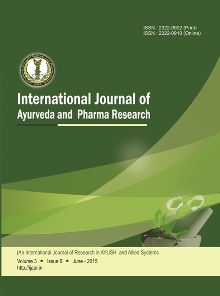A Conceptual Study of Agya Chakra and its Neuro-Anatomical Correlation in Modern Science
Abstract
This paper aims to illuminate the parallels between the Agya Chakra, the sixth energy center among the Shad chakras (six main Chakras) described in Yogic traditions- particularly its structures with modern neuro-anatomy. In Yogic philosophy, Chakras are the dynamic centers or vortices of Pranic energy, each located at specific points within the body. They regulate the flow of Prana (life force energy), thereby influencing both structural integrity and physiological processes. When activated through various Yogic practices, these Chakras help modulate psychophysiological functions. Each Chakra is traditionally associated with distinct neuronal plexuses and sub-plexuses, which correspond to specific internal organs and their physiological roles. Focusing on the Agya Chakra, located between the eyebrows, the study integrates classical yogic descriptions with contemporary anatomical knowledge. Based on the position, structure, and functional attributes described in Yogic literature, a strong correlation is observed between the Agya Chakra and the hypothalamic nuclei along with associated neural plexuses. To validate this correlation, a cadaveric study was conducted, which further supported the anatomical resemblance between the Agya Chakra and the hypothalamus and its neural networks. The findings suggest that the Agya Chakra can be interpreted as a symbolic representation of the hypothalamic region within the framework of integrative anatomy.
Copyright (c) 2025 International Journal of Ayurveda and Pharma Research

This work is licensed under a Creative Commons Attribution-NonCommercial-ShareAlike 4.0 International License.


